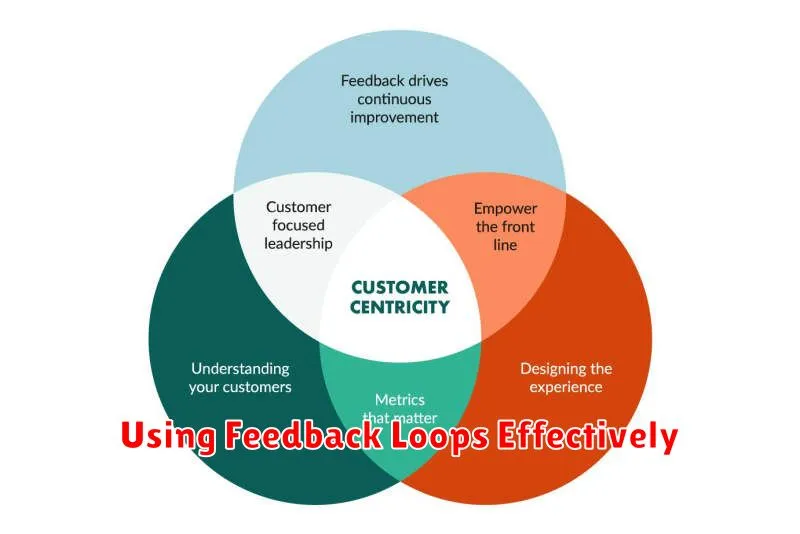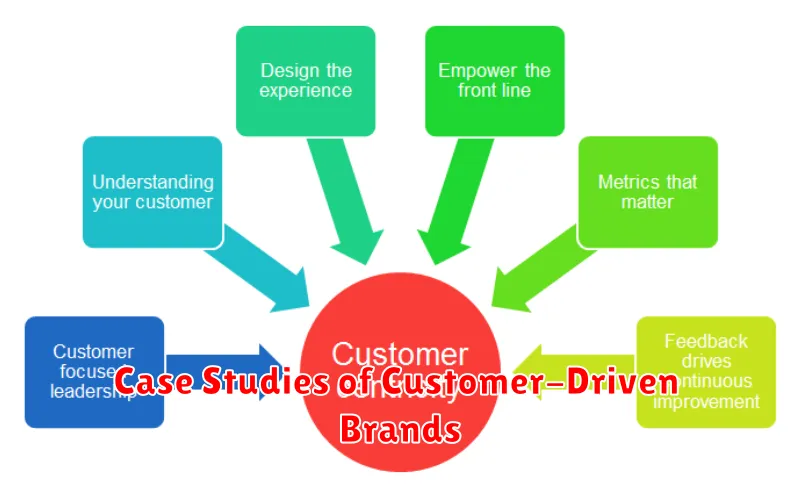In today’s competitive market, a customer-centric business strategy is no longer a luxury, but a necessity. Building a business that truly revolves around the customer involves more than simply providing good service. It requires a fundamental shift in mindset, placing the customer at the heart of every decision, from product development and marketing to sales and customer support. This approach prioritizes understanding customer needs, expectations, and pain points to deliver personalized experiences that foster loyalty and drive sustainable growth. This article will explore the key steps involved in developing and implementing a robust customer-centric business strategy.
Developing a customer-centric business strategy requires a deep dive into understanding your target audience. It necessitates going beyond basic demographics and delving into their behaviors, motivations, and preferences. By truly understanding your customers, you can anticipate their needs and tailor your offerings to deliver exceptional value. This article will provide a comprehensive guide on how to build a customer-centric business strategy, covering everything from conducting thorough customer research and analyzing customer feedback, to implementing changes across your organization and measuring the success of your customer-centric initiatives.
What Is a Customer-Centric Business?
A customer-centric business prioritizes the needs and experiences of its customers in every facet of its operations. It’s a business philosophy that places the customer at the center of all decision-making, from product development and marketing to sales and customer service.
This approach goes beyond simply providing good customer service. It involves deeply understanding customer preferences, pain points, and expectations. It requires actively soliciting and incorporating customer feedback to continuously improve offerings and build strong, lasting relationships.
Understanding Customer Needs and Behavior
A customer-centric business strategy hinges on a deep understanding of customer needs and behavior. Identifying these needs, both stated and unstated, is crucial. This involves analyzing how customers interact with your product or service, understanding their motivations, and recognizing pain points.
Effective methods for gathering this information include customer surveys, focus groups, and analyzing website analytics. By studying purchasing patterns, you can anticipate future needs and adapt your offerings accordingly. This understanding allows businesses to tailor their products, services, and marketing messages to resonate with their target audience, ultimately fostering loyalty and driving growth.
Using Feedback Loops Effectively

Feedback loops are crucial for building a customer-centric business. They provide the mechanism for continuous improvement by gathering, analyzing, and acting on customer input.
Effective feedback loops involve several key steps: actively soliciting feedback through various channels (surveys, reviews, social media), analyzing the data to identify trends and pain points, and implementing changes based on the insights gained. This iterative process allows businesses to constantly refine their offerings and better meet customer needs.
Closing the loop is critical. Customers need to see that their feedback is valued and results in tangible improvements. Communicating the changes made based on feedback builds trust and strengthens customer relationships.
Personalization at Every Touchpoint
In a customer-centric business strategy, personalization is paramount. It’s about tailoring each interaction to the individual customer’s needs and preferences. This fosters stronger relationships and drives loyalty.
Consider personalizing communications, from email marketing to in-app messages. Use customer data to segment audiences and deliver relevant content. Product recommendations should also be personalized, suggesting items based on past purchases and browsing history. Even customer service interactions can be personalized by referencing previous issues or purchases.
Empowering Customer Support Teams
Empowered support teams are crucial for a customer-centric business. They are the front line, directly interacting with customers and addressing their needs. By providing them with the right tools, training, and authority, businesses can ensure a positive customer experience.
Key elements of empowerment include access to information, such as customer history and product details. Decision-making authority allows agents to resolve issues quickly and efficiently. Continuous training and development ensures agents are equipped to handle evolving customer needs and product updates.
Aligning Product and Service Design
Aligning product and service design is crucial for a customer-centric business strategy. This involves deeply understanding customer needs and expectations to create offerings that truly resonate. Product design should focus on functionality, usability, and aesthetics that address specific customer pain points and enhance their experience.
Service design, on the other hand, encompasses all aspects of the customer journey and interactions with the company. This includes customer support, delivery processes, and overall communication. By aligning both product and service design, businesses can create a seamless and positive experience that fosters customer loyalty and advocacy.
Customer Experience Metrics
Measuring customer experience is crucial for a customer-centric strategy. Key metrics provide quantifiable data to understand customer perceptions and identify areas for improvement.
Common metrics include Customer Satisfaction (CSAT), often measured through surveys after specific interactions. Net Promoter Score (NPS) gauges customer loyalty by asking how likely they are to recommend your business. Customer Effort Score (CES) measures how easy it is for customers to interact with your company.
Analyzing these metrics helps businesses understand customer needs and pain points, enabling them to refine their strategies and enhance the overall customer experience.
Technology That Enables Customer Focus
Customer Relationship Management (CRM) systems are essential. They provide a centralized platform to gather and analyze customer data, enabling personalized interactions and targeted marketing campaigns.
Data analytics tools help businesses understand customer behavior, preferences, and needs. This information informs product development, service improvements, and overall business strategy.
Marketing automation platforms streamline marketing efforts by automating repetitive tasks, allowing businesses to engage customers more efficiently and effectively. This includes email marketing, social media management, and lead nurturing.
Retention and Loyalty Programs
Customer retention is less expensive than acquisition. Loyalty programs are a key component of retention strategies. These programs reward repeat customers for their continued business.
Effective programs offer tangible benefits such as discounts, exclusive access, or points systems. They also foster an emotional connection by making customers feel valued and appreciated. Personalized offers and communications further enhance this connection.
Data analysis is crucial for understanding customer behavior and preferences. This allows businesses to tailor loyalty programs to individual needs and maximize their effectiveness. By focusing on retention, businesses can build a loyal customer base and drive long-term profitability.
Case Studies of Customer-Driven Brands

Examining successful customer-centric businesses offers valuable insights. Amazon, for example, prioritizes customer reviews and personalized recommendations, driving loyalty and repeat purchases. Their customer obsession is a key differentiator.
Zappos built its brand on exceptional customer service. Their focus on exceeding expectations through generous return policies and empowered customer service representatives created a strong, positive reputation. This emphasis on service fostered strong customer relationships.
Netflix leverages data analytics to understand viewer preferences. By analyzing viewing habits, they personalize content recommendations, improving customer engagement and retention. This data-driven approach allows them to continuously refine their offerings.

